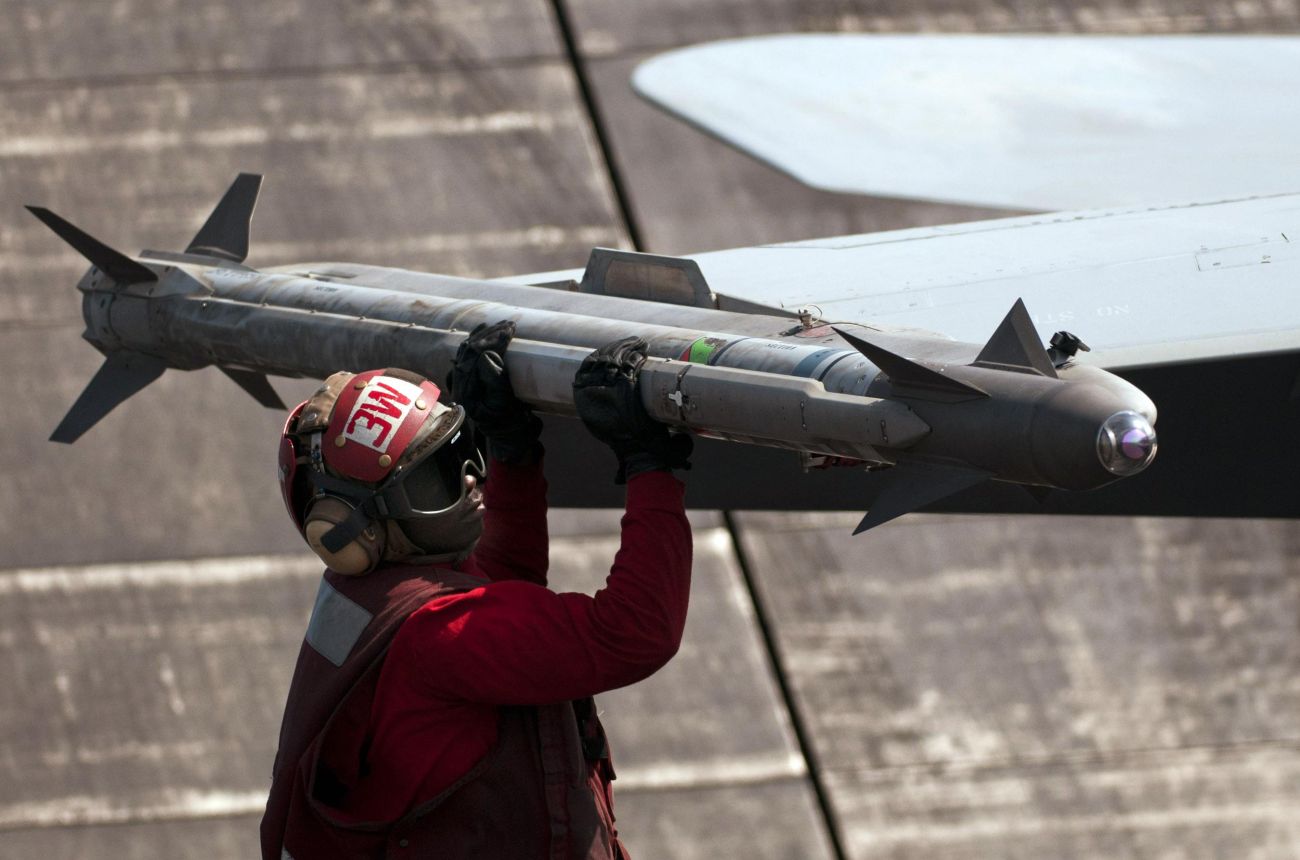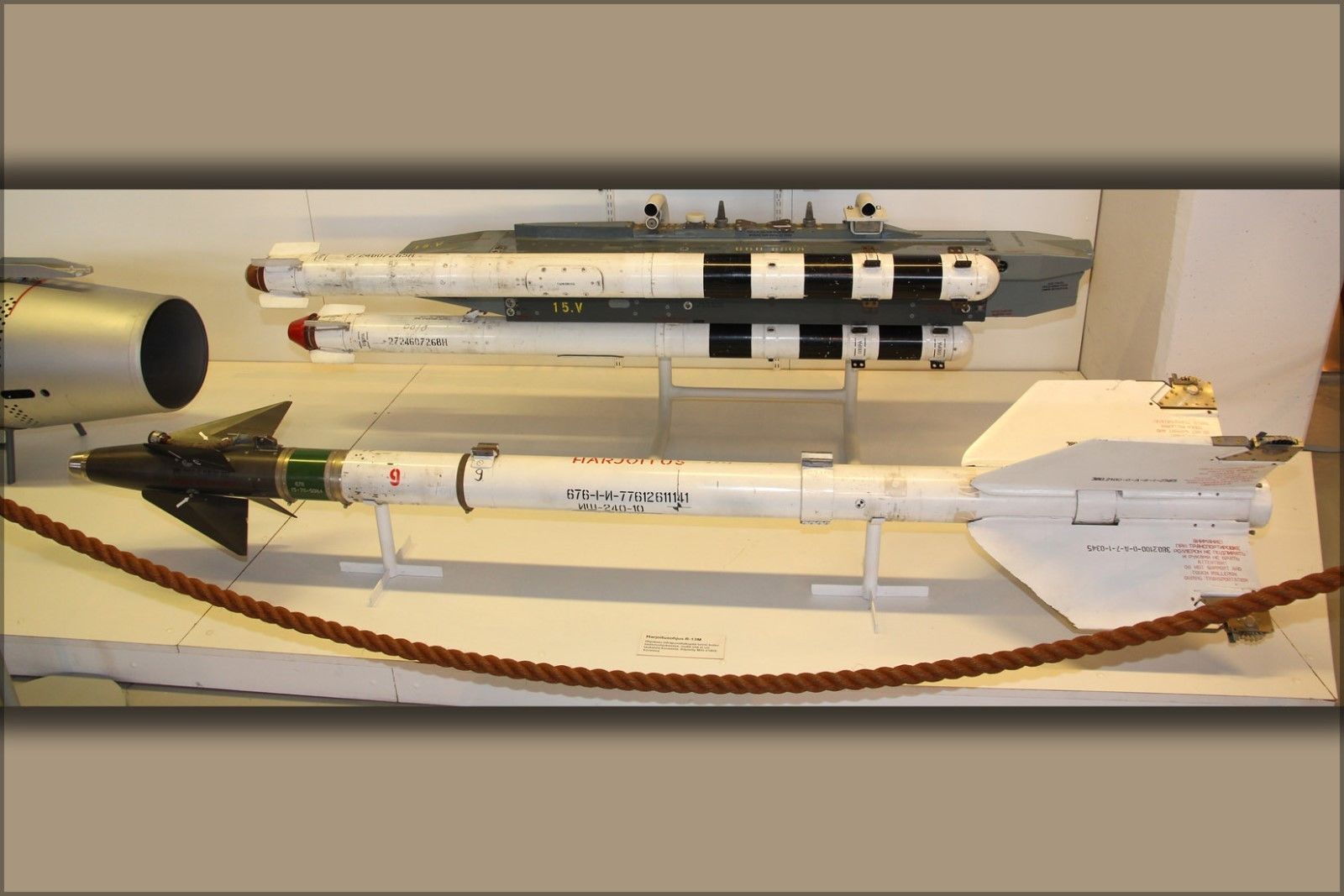AIM-9X Sidewinder missiles have been in the news after the US Air Force used its F-22 Raptors to shoot down Chinese balloons and a few UFOs using these deadly heat-seeking missiles.
Heat-seeking missiles have been one of the most widely used air-to-air missile types in aerial warfare for the last three decades.
The American-made AIM-9 Sidewinder, introduced in the 1950s, is the world’s first heat-seeking missile which has greatly influenced the designs of most modern heatseekers, thanks to espionage efforts by China and the erstwhile Soviet Union during the Cold War.
In 1946, a US Navy Physicist, William B McLean, had a novel idea while working on the lead-sulfide proximity fuzes at the Naval Ordnance Test Station (NOTS), Inyokern, California, now known as the Naval Air Weapons Station China Lake.
These lead-sulfide proximity fuzes were sensitive to infrared radiation. Therefore, Maclean thought that if they could read infrared signatures to initiate the detonation of missiles, they should also be able to track infrared signatures.
Maclean’s concept entailed a gyroscopically spinning magnet that would reflect the emissions from a heat source onto a sensitive photocell. When the source moves away from the gyro’s axis, the photocell generates a signal in a coil surrounding the magnet, prompting it to turn its axis toward the mobile heat source.
He began working on his concept independently with a small team of volunteers and laboratory funding. It was not until 1951 that his developmental work started receiving official financing.
Finally, the missile envisioned by Maclean entered service in 1956. The missile was named AIM-9 ‘Sidewinder,’ drawing inspiration from a snake that can detect its prey by sensing its body heat.
Interestingly, the missile’s movement in the air also resembled that of a serpent.

The nine-foot-long missile, with a glass nose containing its internal guidance system, had no means of pilot control after it was launched.
It was the most advanced air weapon of its time and the world’s first heat-seeking missile, and therefore highly secretive, as the US officials realized that adversary nations would have a hard time countering this new technology which they were unaware of.
However, this advantage was very short-lived. Only two years later, this advanced missile guidance technology would find itself in the hands of the Soviet missile designers, who would then reverse-engineer it, making it one of the most proliferated weapons systems in the world.
How China Gifted American Missile To Soviet Russia
The Soviet Union was able to obtain this advanced heat-seeking missile with the help of China’s PLA Air Force (PLAAF), which engaged in a series of intense air combats with the Republic of China Air Force (ROCAF) – unofficially called the Taiwanese Air Force – during the second Taiwan crisis in 1958.
As part of a highly secret effort called ‘Operation Black Magic,’ the US Navy modified some of the Taiwanese F-86 Sabre fighters to carry the AIM-9B Sidewinder missile, which was first used during an aerial combat engagement on September 24, 1958.

The Sidewinder did wonders for the Taiwanese Air Force, which claimed nine ‘confirmed’ and two ‘probable’ kills, plus one MiG damage, marking the first time that guided air-to-air missiles were used in combat. It was undoubtedly a resounding success without a single loss of jet on the Taiwanese side.
However, the Taiwanese victory came at a considerable cost for the US, as one of the Sidewinders that hit its target had failed to detonate.
The missile was found embedded inside the fuselage of a PLAAF MiG-17F. The Chinese engineers then removed this Sidewinder, disassembled it, and promptly rushed to the Soviets, who until then had not seen anything as refined and smaller as the technology that went into the AIM-9’s gyroscope.
“The Sidewinder missile was to us a university offering a course in missile construction technology which has upgraded our engineering education and updated our approach to the production of future missiles,” Soviet engineer Gennadiy Sokolovskiy would later recount.
The Soviet engineers copied the missile’s infrared tracking, in-flight steering, and stability mechanisms and created their self-guided missile called the Vympel K-13 (NATO codename ‘AA-2 Atoll’).

The K-13 entered service in 1960, only two years after the Chinese had captured the undetonated Sidewinder missile. Subsequently, the Soviets produced the R-3 version of the missile, which they began shipping to the Warsaw Pact nations.
The missile designs were also provided to China in return for their help in acquiring it, based on which they also developed their own PL-2 missile, officially operational in 1967.
Missile Stolen Again
Acquiring the AIM-9B Sidewinder was undoubtedly a gift dropped in the lap of the Soviets by good fortune, which they exploited to a great extent.
However, the Americans had already begun working on more advanced iterations of the missile, and the Soviets simply did not have the technical prowess to keep pace with American advancements.
In the years that followed, the Soviets soon found out through air wars in the Middle East and Southeast Asia that the R-3S missile they had exported to their client nations was rapidly becoming obsolete.
So, on October 22, 1967, a German architect and a KGB spy agent in West Germany named Manfred Ramminger, together with his Polish driver Josef Linowski and German F-104 Starfighter pilot Wolf-Diethard Knoppe stole an operational AIM-9 missile from the Neuburg Air Base in erstwhile West Germany.

Ramminger managed to sneak into Neuburg Air Base in the evening by exploiting thick fog and careless guards and quickly loaded an operational AIM-9 missile from the local ammunition depot into a wheelbarrow, which he then wheeled down the entire runway to his Mercedes-Benz, parked outside the base.
The 2.9-meter-long missile would not fit in the back seat of his car, so Ramminger covered it with a carpet and smashed it out of the rear window. To avoid attracting the attention of the police, he tied a red piece of cloth to the protruding part, as required by German traffic laws.
He was able to reach his residence without any disturbance, after which he patiently disassembled the Sidewinder, loaded the pieces into a box, and mailed it to Moscow.
To avoid problems from the German or Soviet customs, Ramminger declared the parcel’s content as being for ‘low-grade export.’ Due to the parcel’s weight, the post charged him $79.25.
Also, Ramminger kept the fuse for himself, which he handed over to his KGB contact.
He then boarded a plane headed for the Soviet Union to collect the mail, only to learn that the package had not arrived. Frustrated, Ramminger returned to Germany and found that the airline had dispatched the box to the wrong destination. He then shipped the missile out again and bordered another plane for Moscow.
The Soviets must have certainly been delighted to receive the new AIM-9 variant for $79.25. The Soviet technicians once again reverse-engineered the improved Sidewinder variant and thus managed to bridge the technological gap with the Americans.
In 1974, the Soviets introduced an improved variant called the R-13M missile, which was almost an exact copy of the AIM-9E, at least in terms of its external appearance.

The new variant had improved guidance systems with a cooled seeker, which provided the missile with greater homing intelligence and resistance to countermeasures and interference.
The Soviets shared this weapon as well with the Warsaw Pact nations. In total, 28 countries have operated some variant of the Soviet analog of the Sidewinder missile. Even today, McLean’s invention directly inspires several of Russia’s most advanced air-to-air missiles.
- Contact the author at tanmaykadam700@gmail.com
- Follow EurAsian Times on Google News




